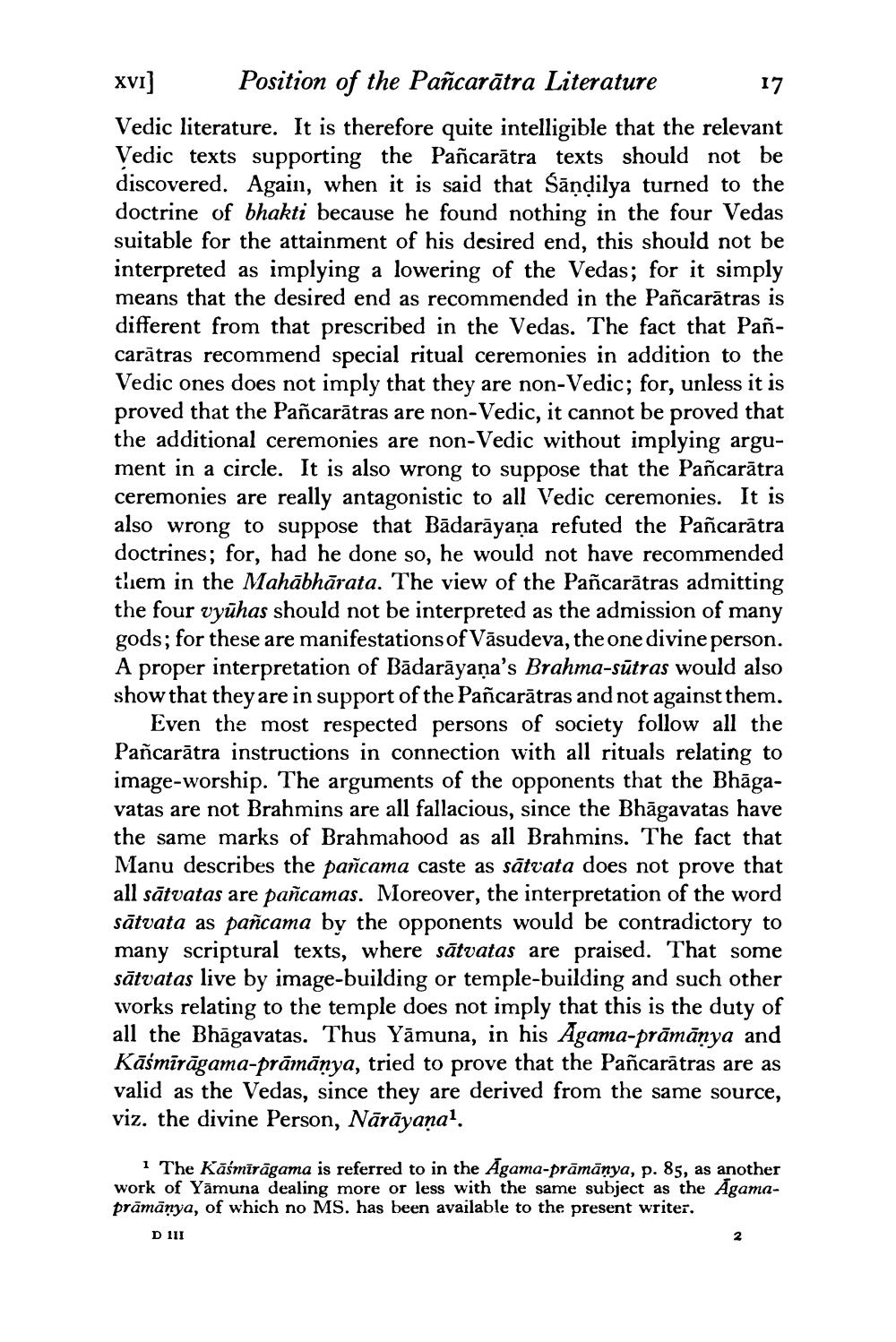________________
XVI]
Position of the Pañcarātra Literature
17
Vedic literature. It is therefore quite intelligible that the relevant Vedic texts supporting the Pañcarātra texts should not be discovered. Again, when it is said that Sāṇḍilya turned to the doctrine of bhakti because he found nothing in the four Vedas suitable for the attainment of his desired end, this should not be interpreted as implying a lowering of the Vedas; for it simply means that the desired end as recommended in the Pañcarātras is different from that prescribed in the Vedas. The fact that Pañcaratras recommend special ritual ceremonies in addition to the Vedic ones does not imply that they are non-Vedic; for, unless it is proved that the Pañcarātras are non-Vedic, it cannot be proved that the additional ceremonies are non-Vedic without implying argument in a circle. It is also wrong to suppose that the Pañcarātra ceremonies are really antagonistic to all Vedic ceremonies. It is also wrong to suppose that Badarāyaṇa refuted the Pañcaratra doctrines; for, had he done so, he would not have recommended them in the Mahabharata. The view of the Pañcarātras admitting the four vyuhas should not be interpreted as the admission of many gods; for these are manifestations of Vasudeva, the one divine person. A proper interpretation of Badarāyaṇa's Brahma-sutras would also show that they are in support of the Pañcarātras and not against them.
Even the most respected persons of society follow all the Pancarātra instructions in connection with all rituals relating to image-worship. The arguments of the opponents that the Bhāgavatas are not Brahmins are all fallacious, since the Bhāgavatas have the same marks of Brahmahood as all Brahmins. The fact that Manu describes the pañcama caste as sātvata does not prove that all sātvatas are pañcamas. Moreover, the interpretation of the word sātvata as pañcama by the opponents would be contradictory to many scriptural texts, where satvatas are praised. That some sātvatas live by image-building or temple-building and such other works relating to the temple does not imply that this is the duty of all the Bhāgavatas. Thus Yamuna, in his Agama-prāmāṇya and Kaśmīrāgama-prāmāṇya, tried to prove that the Pañcaratras are as valid as the Vedas, since they are derived from the same source, viz. the divine Person, Nārāyaṇa1.
1 The Kāśmīrāgama is referred to in the Agama-prāmāṇya, p. 85, as another work of Yamuna dealing more or less with the same subject as the Agamaprāmānya, of which no MS. has been available to the present writer.
D 111
2




